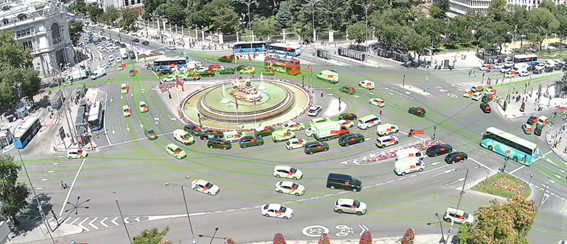On December 3, SICE and the Swedish Transport Administration Trafikverket signed the contract for the implementation of the traffic systems of the iconic Stockholm bypass: a beltway that includes 55 kilometers of tunnel and with which it is sought to divert traffic from the urban centre.
In recent years, the Stockholm region has grown at breakneck pace, which entails a significant challenge for a city center whose infrastructure cannot fall behind. The city currently has only one main north-south connection route, which was designed 50 years ago for a volume of traffic that has now doubled. The consequences are as expected: the typical traffic congestions of the big capitals taking place every day at rush hour and wear of an overused road, which result in significant socioeconomic osses for the local population.
The solution proposed by the Swedish Transport Administration (Trafikverket) is the Stockholm Bypass: a 21-kilometer-long beltway in each direction which will go round the west of the city, thus moving the traffic away from the urban center. To overcome the added difficulty posed by the waters of the Baltic sea and of the iconic Lake Mälar surrounding the city, Trafikverket decided, after many years of careful study and planning, that most of the beltway would be a twin-tube tunnel with three lanes in each direction, amounting to approximately 55 kilometers of underground road. These works are among the largest that the Swedish Administration has undertaken so far, and their importance is crucial to guarantee the sustainable growth of the most highly-populated region in the country.
It is no less important for SICE, which sees its effort rewarded by obtaining its first contract in the Nordic countries. This award is a strategic milestone for the company, since it gives it the opportunity to confirm its expertise in tunnel management with a highly significant and internationally prestigious project.
The contract “FSE904 – Traffic Systems” is one of the five electromechanical batches bid for by Trafikverket, and will include the design, installation, testing, commissioning and maintenance of the following systems:
- Variable message signs
- Gantries
- Traffic detectors
- Tunnel closure barriers
- Regulation of access to the freeway
SICE will face complex challenges, such as the effective coordination of the work in an international environment with multiple contractors who will simultaneously carry out their tasks in the newly-constructed tunnel, or the implementation of the BIM (Building Information Modelling) methodology chosen by Trafikverket to manage the project.
SICE will contribute with its experience to solving the communication problems between the north and south areas of one the European fastest growing metropolis, which intends to turn this project into an international example of cutting edge technology and innovation.





